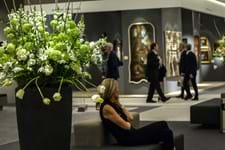As you would expect of the world’s second largest art market, the UK’s exports of worked antique ivory carvings and objects containing antique ivory are large, but not necessarily the largest. In 2015 Italy exported 7,827 carvings, while the UK exported 2,514.
However, those figures ignore the old ivory tusks exported lawfully from other EU member states in recent years, something the UK does not permit.
Bearing in mind how many carvings can be fashioned from an old tusk, my analysis of CITES figures for 2015 shows that if you also take account of tusks then Belgium, Spain, France, Italy and the Netherlands were considerably larger exporters than the UK.
In Belgium’s case their total ivory exports were equivalent to 41,588 carvings.
Mark Dodgson
Secretary general, BADA
“Those figures ignore old ivory tusks exported lawfully from other EU member states
Alternative solution
MADAM – Experience has shown us demand for ivory products (mainly ornaments) will remain high, despite any ban on the trade of all ivory.
If anything, demand is likely to increase, as the commodity becomes more scarce.
For the trading of a commodity to be stopped, or even curtailed, it is the market that must be destroyed, in this case the market for modern ivory.
With that in mind here is my six-step alternative solution to an outright ban:
1. Suppress the demand for modern ivory products. Continue to bring as much pressure as possible on authorities in those countries – primarily China, India and Indonesia – who deal extensively in modern ivory products.
2. Retain the restrictions on all the trade in post-1947 ivory products.
3. Increase penalties for the trade in post-1947 unlicensed ivory products and consider short custodial sentences for repeat offenders.
4. Local trading standards officers to conduct unannounced inspections of dealers and auction houses. If there is doubt about the age of an ivory item, it should not be traded.
5. Apply a levy on the public sale of all pre-1947 worked ivory items. This might be 10% and applied in a similar manner as the current ‘Droit de Suite’ levy applied to the public sale of paintings by living artists. This levy should be donated to help fund anti-poaching measures.
6. Issue certificates to guarantee authenticity of an antique item of ivory.
Kerry Hastings-Spital
Quiet Street Antiques, Bath












